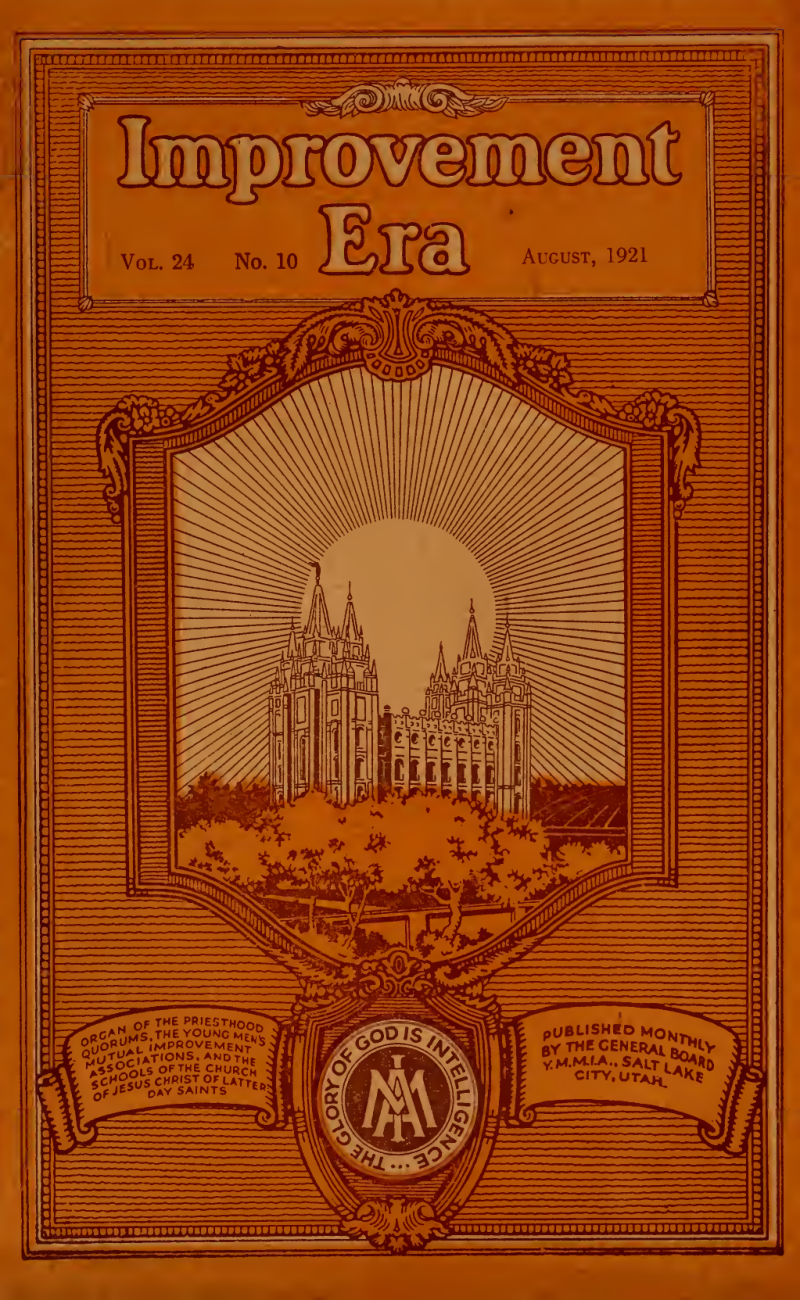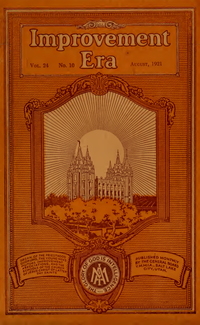Elder B. H. Roberts addresses Joseph Smith's Masonic connection, stating that the endowment ceremonies originated from divine revelations and predated his Masonic affiliations.
- Type
- Periodical
- Hearsay
- Secondary
- Reference
B. H. Roberts, "Masonry and 'Mormonism'," Improvement Era 24, no. 10 (August 1921): 938–939
- Scribe/Publisher
- Church History Library, Improvement Era
- Audience
- Reading Public
- Transcription
Masonry and "Mormonism"
An inquiry was recently received by Elder B. H. Roberts relative to the Prophet Joseph Smith's connection with masonry, and its connection with temple ceremonies, and to the endowment rites having been copied from masonry, etc. The inquirer desired to know concerning these subjects, and in reply thereto, Elder Roberts submitted the following explanation, which, we think, will adequately answer the frequent questions that come to the Improvement Era regarding them:
Relative to the Prophet's connection with masonry and its connection with temple ceremonies, and the endowment rites having been copied from masonry, etc., which are the subjects of your inquiry, I would respectfully submit the following: While there is no doubt of the Prophet's connection with masonry, at Nauvoo, and that at about the same time of his first connection with masonry he also introduced the endowment ceremonies; namely, on the 4th of May, 1842,-the evidence, to my mind, is very clear that his knowledge of the endowment ceremonies preceded his contact with masonry.
I believe the beginnings of God's revelation to him of endowment ceremonies began with his getting possession of the Book of Abraham, in the form of Egyptian papyrus manuscript, facsimiles of which are to be found in the History of the Church, Vol. IV, pages 520-523, the work edited by myself. The Prophet first learned of this Book of Abraham, on July 3, 1835, (See History of the Church, Vol. II, page 235) and the record was purchased shortly afterwards by the Saints at Kirtland. (For the Prophet's account of this record see Church History, Vol. II, pages 348-351.) A careful examination of facsimile No. 2, from the Book of Abraham, and the Prophet's half cryptic translation, which accompanies it, clearly shows that the signs and figures thereon refer to matters concerning grand key words of the Priesthood, with the assertion that some of the writing cannot be revealed unto the world, "but is to be had in the Holy Temple of God." Some nine of the figures in the facsimile are referred to, with the promise that they will be given in the due time of the Lord, all of which doubtless refers to the sacred mysteries of our Temple ordinances, and all this from five to seven years before the Prophet's contact with masonry.
In this connection, also, I call your attention to Doc. and Cov. Sec. 110, which contains the account of the visions of the Prophet in the Kirtland Temple, among which is the account of the appearance of Elias, who committed the dispensation of the gospel of Abraham unto the Prophet, saying, to Oliver and Joseph, that in them and in their seed all generations after them would be blessed. Undoubtedly this Elias stood at the head of the dispensation of the gospel on the earth in the days of Abraham and hence was the one chosen to restore the keys of that dispensation to Joseph Smith, and since the reference I have given you to the Book of Abraham has such direct allusion to our temple mysteries it must be that Abraham obtained a knowledge of these things from Elias and also that the keys that he brought to Joseph Smith undoubtedly had reference to the same subject; and, as the visit of Elias occurred about one year after Joseph obtained the Book of Abraham, it was likely through the keys of knowledge restored by Elias that he was able to understand the subject matter of the Book of Abraham; and all this long before his contact and participation in masonry. (For the Prophet's account of the introduction of the endowment, on the 4th day of May, 1842, see History of the Church, Vol. V, pages 1-3.)
It is rather significant that about two months before introducing the endowments, namely, March 1, 1842, the Prophet began the publication of the Book of Abraham in the Times and Seasons, and as that was the beginning of the publication of the book, he must have been at work on the translation of it some months before.
A careful study of these facts will, I think, establish beyond controversy that the Prophet was not at all dependent upon anything he learned in masonry for our endowment ceremonies, any more than what he learned from the defective creeds of Christendom made him indebted to those creeds for what he brought forth in the dispensation of the gospel that he, under God, gave to the world. The Saints may rest assured that what we have through the Prophet, in relation to the Priesthood and its sacred mysteries, resulted from the revelations of God to Joseph Smith, and not from the Prophet's incidental and brief connection with masonry.
- Source Link
- https://catalog.churchofjesuschrist.org/assets/df836588-d623-414e-b82b-9f3c784bb1ae/0/0?lang=eng
- Citations in Mormonr Qnas
The B. H. Roberts Foundation is not owned by, operated by, or affiliated with the Church of Jesus Christ of Latter-day Saints.



